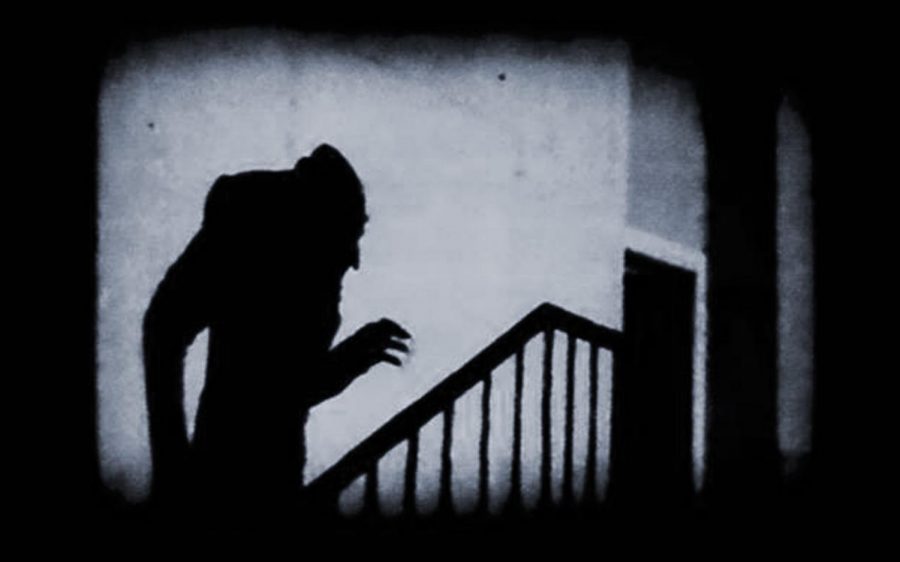A Review of Nosferatu
The 1922 film
Nearly a century old, the German Expressionistic film Nosferatu still holds the power to frighten audiences.
November 9, 2020
I will never forget the first time I learned of Nosferatu. It was several years back and during an already strange episode of Spongebob, ‘Graveyard Shift’, when the final scene gave me chills. The screen flipped to a shot of a black and white image of a tall figure with pointed ears and a giant nose. Count Orlok was this creature’s name, and as I would soon learn, he was the main antagonist of the 1922 German horror classic Nosferatu.
The movie itself is a silent film by Friedrich Wilhem Murnanu that is 94 minutes in length. Although different in many ways from Bram Stoker’s 1987 novel Dracula, it takes many ideas from this staple in horror literature, with many considering it a loose adaptation of the novel. Even the intertitle English card version of Nosferatu calls ‘Count Orlok’ Dracula.
The similarities in story are also strikingly similar, involving a protagonist getting called to do a job in Transylvania, arriving at a town at the base of the count’s castle, and receiving warnings from the townsfolk about what horrors await them in the castle. Nevertheless, the film and the novel are different enough as to not be exact copies.
Like many films during the Weimar period of Germany (1918-1933), Nosferatu is a German Expressionist film. German Expression is a form of cinematography that purposely warps the perception of reality to create an emotional impact on the viewers. This was very prevalent throughout the film, with a very odd transition from scene to sign and with the lens of the camera warping in shape depending on the scene to create an emotional effect to enhance the mood.
The emotional effect of this film was also heavily due to the wondrous soundtrack by Hans Erdmann. In the German Expressionist way, the music isn’t what you would expect, encompassing many different pitches in sounds to accentuate the atmosphere of the scene. The music even manages to convey conversations when no intertitle cards are present to show what the characters were saying.
In the nature of many silent films, particularly German Expressionist ones, emotions are exaggerated and amplified. This allows for more action to take place on screen without the use of intertitle cards, which could take up much of the run time in long conversations. For instance, when the protagonist, Hutter, arrives at Orlock’s castle and they sit down to eat, an entire conversation goes by without a single intertitle card flashing on screen. The viewer can see that they are mostly talking about mundane topics until Hutter cuts his finger accidentally and sheer confusion washes over his face at the sight of Count Orlok trying to lick the cut.
Several themes can be observed in this film, but the most prevalent one is fear of the other. As Hutter begins to understand what Count Orlock is, his fear of “the other” grows exponentially.
Many critics have also pointed out possible anit-Semitic undertones of the film, mostly demonstrated in the Count’s stereotypical facial features. During this period in German history, suspicion of Jewish people was on the rise, and it may be the case Murnanu subscribed to the prejudice that would soon fuel the darkest chapter in German history. To be fair however, Murnau was friends with many Jewish people, so the film’s anti-Semetic subtext remains debatable.
All in all, the film is a must-see as many aspects of modern day horror were first demonstrated or popularized by this film — not to mention the many current references and jokes that are based on scenes from the film. For horror lovers, old film connoisseurs, and those looking for a new cinematic experience, Nosferatu is not to be missed, even nearly one hundred years after its debut.













